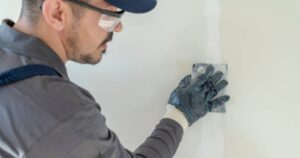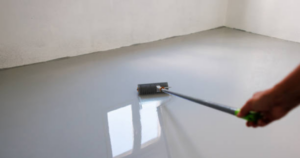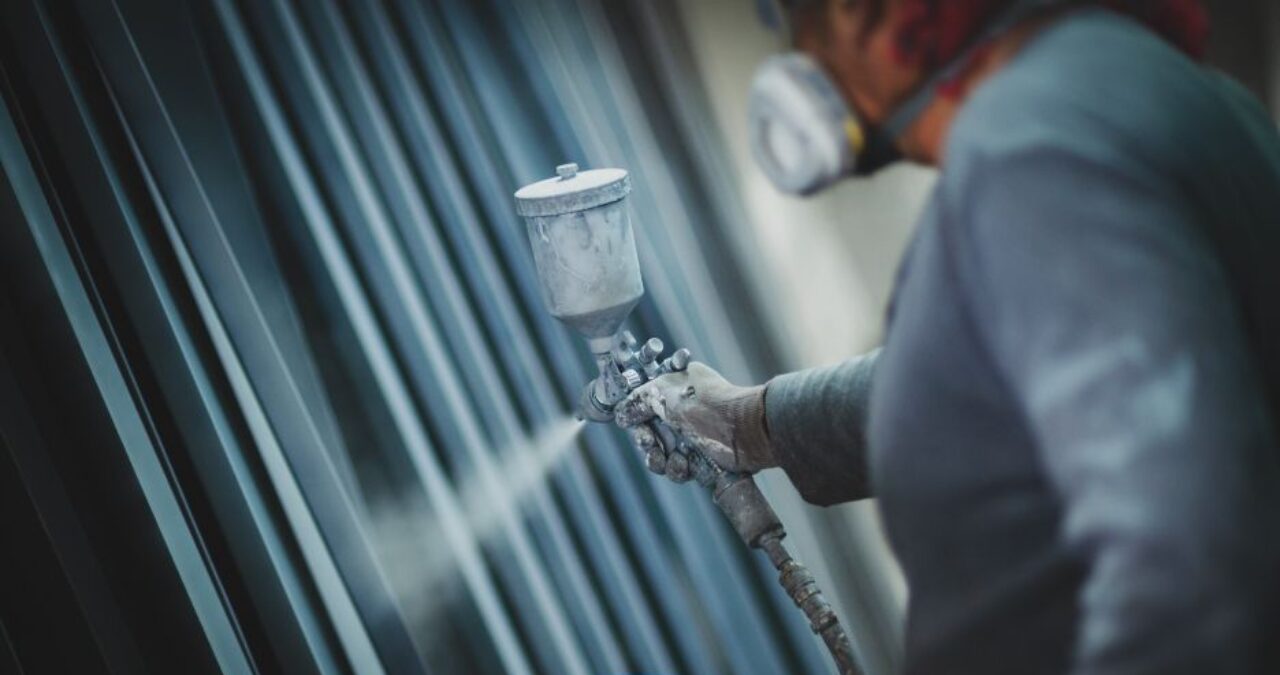You’ve worked hard to make your retail store inviting, a true reflection of your brand. The colors were lively, the lines crisp, and the first impression was strong. But then, slowly, the once-bright facade begins to dull, the cheerful hues lose their luster, and your paint is fading.
If you’re a facility manager, business owner, or property manager, you recognize this frustrating scenario. Fading paint isn’t just an eyesore; it’s a signal that can subtly deter customers, impacting your curb appeal and, finally, your bottom line. At Southeast Painters, Inc., with over 30 years as dedicated commercial painting contractors across the Southeast, we comprehend the unique challenges retail environments face. We’re here to explain why your paint might be losing its brightness and how our commercial painting services can provide lasting answers.
Let’s learn the methods for a long-lasting, lively finish that keeps your retail store looking fresh and professional.
Why Retail Paint Fades So Quickly?
To solve the problem, we first need to comprehend its causes. Paint fading isn’t random; it’s a direct result of specific environmental and material factors.
The Sun’s Relentless Attack: UV Radiation
Ultraviolet (UV) radiation is paint’s primary adversary. These powerful rays break down the chemical bonds within paint pigments, causing colors to lose intensity. This is especially true for south-facing walls or areas with prolonged sunlight. This constant exposure is why your “exterior paint” seems to “lose its color” faster.
Environmental Wear and Tear: Moisture, Pollution, and Temperature Swings
It’s not just the sun. Humidity, rain, dramatic temperature shifts, and airborne pollutants constantly assault your paint. Moisture can lead to mildew and chalking, while pollutants can chemically react with paint. Even frequent, aggressive cleaning with harsh chemicals can strip away protective layers.
The Foundation Matters: Poor Paint Quality and Application
Not all paints are created equal. Low-grade paints lack sufficient UV inhibitors or durable binders, leading to rapid fading. Improper surface preparation, skipping steps like cleaning, sanding, or priming, means the paint won’t adhere properly. When the foundation isn’t solid, even the best paint will fail prematurely. Thin, uneven coats also offer less protection.
The Cost of Faded Paint: More Than Just Looks
While fresh paint looks good, its longevity offers considerable business advantages. Fading paint has tangible, negative impacts that reach far past mere aesthetics.
Diminished Brand Image and Customer Perception
A faded exterior sends the wrong message. It suggests a lack of attention to detail, impacting how customers perceive your products or services. Your brand image suffers, and your store might be seen as unprofessional.
Reduced Curb Appeal and Foot Traffic
In retail, first impressions are everything. A lively, well-maintained storefront attracts attention. Faded paint does the opposite, making your store blend in or appear uninviting.
Increased Maintenance Cycles and Costs
If your paint fades quickly, you’ll be repainting more often. This means higher labor and material costs, impacting your maintenance budget and the overall return on investment for painting.
Potential for Underlying Damage
Below the surface, compromised paint can expose underlying building materials to moisture, potentially leading to more considerable structural problems.
Smart Strategies for Long-Lasting Retail Paint Finishes
Preventing paint fading is about a strategic approach that prioritizes quality materials and expert application.
Choose High-Performance, Commercial-Grade Paints
This is your primary defense. Always select premium commercial-grade paints specifically formulated for exterior durability and robust UV resistance. Acrylic latex paints with advanced UV inhibitors are often preferred for retail environments. Lighter shades tend to fade less noticeably than darker hues.
Meticulous Surface Preparation is Essential
This is the crucial component of paint longevity. Proper cleaning, degreasing, sanding, and priming create the ideal canvas for paint adhesion. For older surfaces battling rust or stubborn previous coatings, professional sandblasting or ecoblasting might be necessary for a perfectly clean, stable base.

Professional Application Techniques Make a Difference
Applying paint correctly, with the right number of coats, proper thickness, and in ideal weather conditions, is crucial for maximum longevity. A professional commercial painting contractor understands these nuances, ensuring a flawless, durable finish.
Consider Specialized Protective Coatings
For high-traffic areas or harsh conditions, specialized coatings can be very effective. Solutions like traffic coating or resinous flooring (epoxy flooring) offer superior protection against wear, chemicals, and UV, greatly extending the life and appearance of the underlying surface.

Southeast Painters: Your Partner in Durable Retail Aesthetics
This is where our three decades of experience truly shows. As a prominent commercial painting company in the Southeast, we specialize in delivering finishes that truly withstand the elements. We use high-quality, durable paints designed specifically for commercial applications. Our process emphasizes minimal disruption to your retail operations, working efficiently to reduce downtime while ensuring full regulatory compliance and safety.
Our extensive surface preparation, including professional sandblasting and ecoblasting, guarantees excellent paint adhesion and longevity, addressing the root cause of premature fading directly.
Beyond traditional paint, we offer robust resinous flooring (epoxy flooring) and traffic coating solutions that provide unparalleled durability, chemical resistance, and slip safety for high-traffic retail areas. This protects your investment from the ground up.
Get to know more about our services here.
Frequently Asked Questions (FAQ)
Can interior retail paint fade too, or is it just exteriors?
Yes, interior paint can also fade, especially in areas with direct sunlight exposure through windows or skylylights. UV rays are the primary culprit. High-traffic areas with frequent cleaning can also contribute to wear.
Are certain paint colors more prone to fading than others?
Generally, yes. Darker, more lively colors tend to fade more noticeably and quickly than lighter shades. Darker pigments absorb more UV radiation. Using high-quality, UV-resistant paints is especially crucial for darker hues.
What can I do after painting to help prevent fading?
Regular, gentle cleaning is important for removing dirt and pollutants. Use mild detergents and soft cloths. For interiors, consider UV-filtering window films or blinds/curtains on windows with direct sun exposure. Avoid harsh chemical cleaners.
Ic you ave more question about you can do, please get in touch with our team to solve your questions.
Is fading the same as chalking?
No, they are related but distinct issues. Fading refers to the loss of color intensity. Chalking is when the paint’s binder breaks down, releasing a fine, powdery residue. Both are signs of paint degradation, but chalking is a specific type of breakdown that often accompanies fading.


